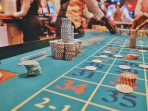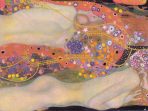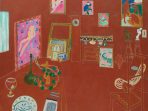
From 13 October 2022 to 19 February 2023, the British Museum presents an exhibition commemorating 200 years since the decipherment of Egyptian hieroglyphics.
Source: British Museum · Image: The Rosetta Stone. Granodiorite; Rasid, Egypt; Ptolemaic,196BC © The Trustees of the British Museum
“Hieroglyphs: Unlocking Ancient Egypt” is a journey through the inscriptions and objects that helped scholars decipher the language of Ancient Egypt, one of the great milestones in the history of the study of the ancient world. The exhibition presents some 240 objects, including loans from national and international collections, as well as some of the most famous pieces in the British Museum, including -of course- the Rosetta Stone.
“For the first time in millennia the ancient Egyptians could speak directly to us,” said Hartwig Fischer, director of the British Museum, explaining the importance of the milestone commemorated by the exhibition. “By breaking the code, our understanding of this incredible civilisation has given us an unprecedented window onto the people of the past and their way of life.“
The British Museum explains that the exhibition “charts the race to decipherment, from initial efforts by medieval Arab travellers and Renaissance scholars to more focussed progress by French scholar Jean-François Champollion (1790 – 1832) and England’s Thomas Young (1773 – 1829). The Rosetta Stone will be viewed alongside the very inscriptions that Champollion and other scholars studied in their quest to understand the ancient past. The exhibition will also feature stunning objects that highlight the impact of that breakthrough.”

Image: ‘The Enchanted Basin’. Sarcophagus of Hapmen,blackgranite. al-Hawd al-Marsud, Egypt, 26th Dynasty, 600 BC. © The Trustees of theBritish Museum
In addition to the Rosetta Stone, “star objects include ‘the Enchanted Basin’, a large black granite sarcophagus from about 600 BCE, covered with hieroglyphs and images of gods. The hieroglyphs were believed to have magical powers and that bathing in the basin could offer relief from the torments of love. The reused ritual bath was discovered near a mosque in Cairo, in an area still known as al-Hawd al-Marsud – ‘the enchanted basin’. It has since been identified as the sarcophagus of Hapmen, a nobleman of the 26th Dynasty.”
Also on display, among other items of interest, are the Book of the Dead papyrus of Queen Nedjmet; the mummy bandage of Aberuait, from the Louvre Museum in Paris; or the cartonnage and mummy of the lady Baketenhor, on loan from the Northumbria Natural History Society.
Sumber: theartwolf.com
 Skip to content
Skip to content







